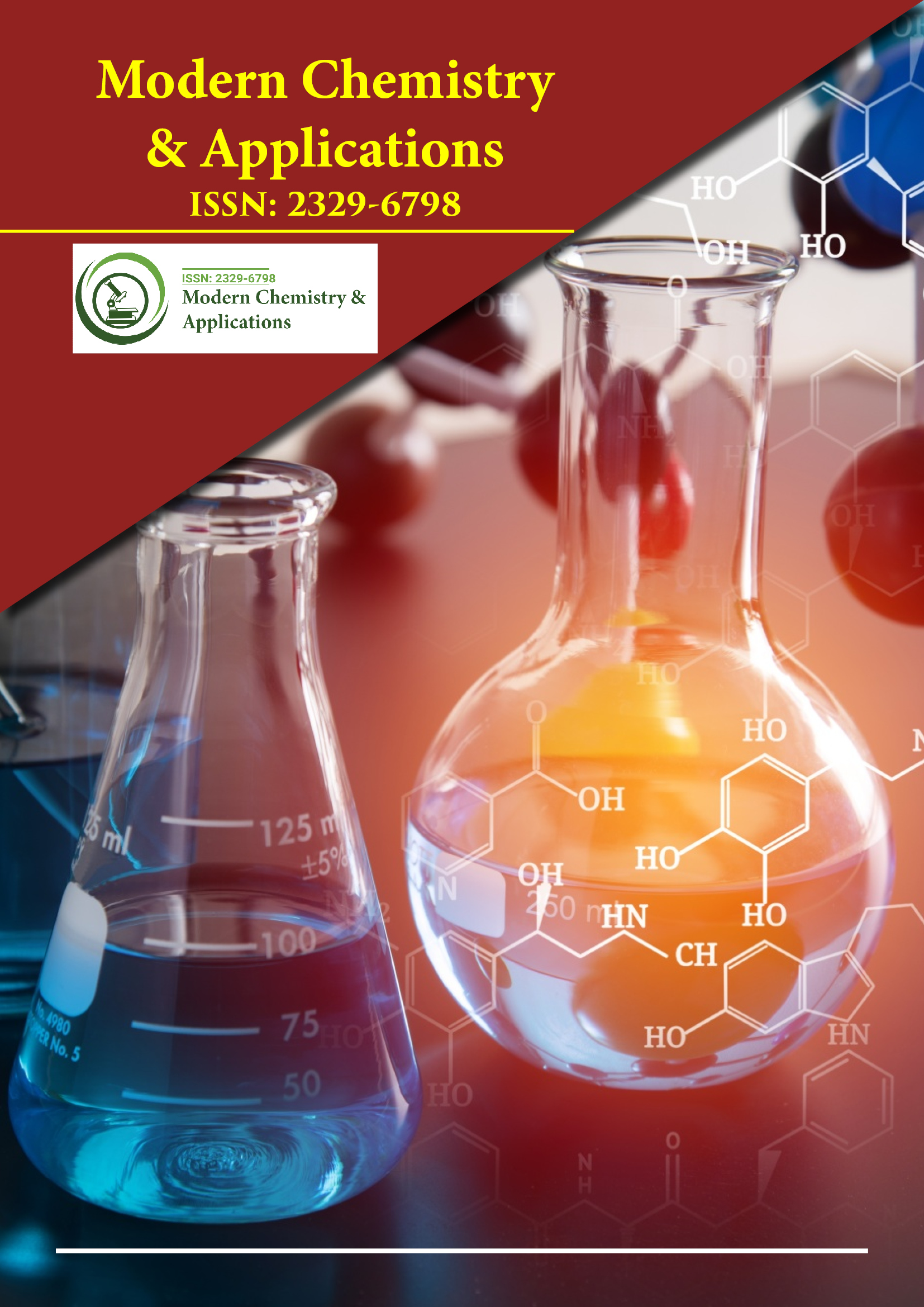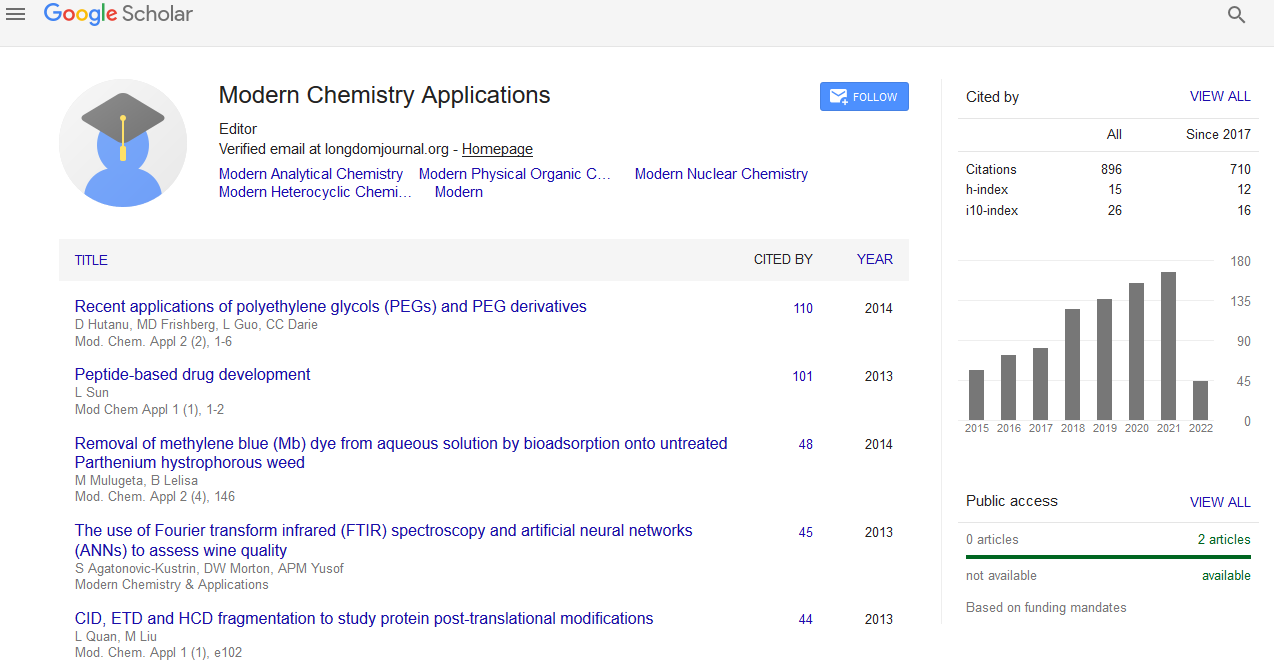Indexed In
- Open J Gate
- JournalTOCs
- RefSeek
- Hamdard University
- EBSCO A-Z
- OCLC- WorldCat
- Scholarsteer
- Publons
- Geneva Foundation for Medical Education and Research
- Google Scholar
Useful Links
Share This Page
Journal Flyer

Open Access Journals
- Agri and Aquaculture
- Biochemistry
- Bioinformatics & Systems Biology
- Business & Management
- Chemistry
- Clinical Sciences
- Engineering
- Food & Nutrition
- General Science
- Genetics & Molecular Biology
- Immunology & Microbiology
- Medical Sciences
- Neuroscience & Psychology
- Nursing & Health Care
- Pharmaceutical Sciences
DBU/H2O as an efficient, eco-friendly and inexpensive catalyst for trans-esteriï¬Âcation and transacylation reactions
5th Global Chemistry Congress
September 04-06, 2017 | London, UK
Elahe Akbarzadeh
Islamic Azad University, Islamshahr Branch, Iran
Posters & Accepted Abstracts: Mod Chem Appl
Abstract:
Transesterification or alcoholysis reaction in the production of alkyl esters or biodiesel is the process of exchanging alkoxy moiety between two carboxyl groups which is often superior to direct synthesis of esters from carboxylic acids and alcohols. This method especially can applicable for labile and difficult to separate carboxylic acids, polymerization of lactones, the preparation of oils and fats, the curing of alkyd resins in the paint industry, and the preparation of polyesters [1, 2]. There are several available procedures in the literature as catalysts for this reaction [3,4]. However, many of the present methods have drawbacks and disadvantages such as long reaction times, harsh reaction conditions, toxicity and difficulty in product isolation. We recently reported the use of mild Lewis acid for efficient room-temperature transesterification and transacylation reactions [5]. Also, we introduced aqueous organocatalysts for dihydrothiopyran-4-one system conducting parallel competitive MBH and diastereoselective aldol reactions [6]. Based on these achievements and in continuation of our previous experiences, we would like to report here a simple and convenient transesterification and transacylation procedure conducted at roomtemperature under DBU/H2O catalysis. These reactions proceed at room temperature in suspension of an ester and alcohol through catalytic quantities of DBU. Completion of the reaction followed by TLC or GC experiments and the structure of the products assigned based on their spectroscopic data. In summary, we have demonstrated that a very stable and mild reagent which can undergoes rapid reaction under mild and eco-friendly conditions with high yields. The products are directly obtained from the reaction mixtures by evaporation of the volatile portion.


